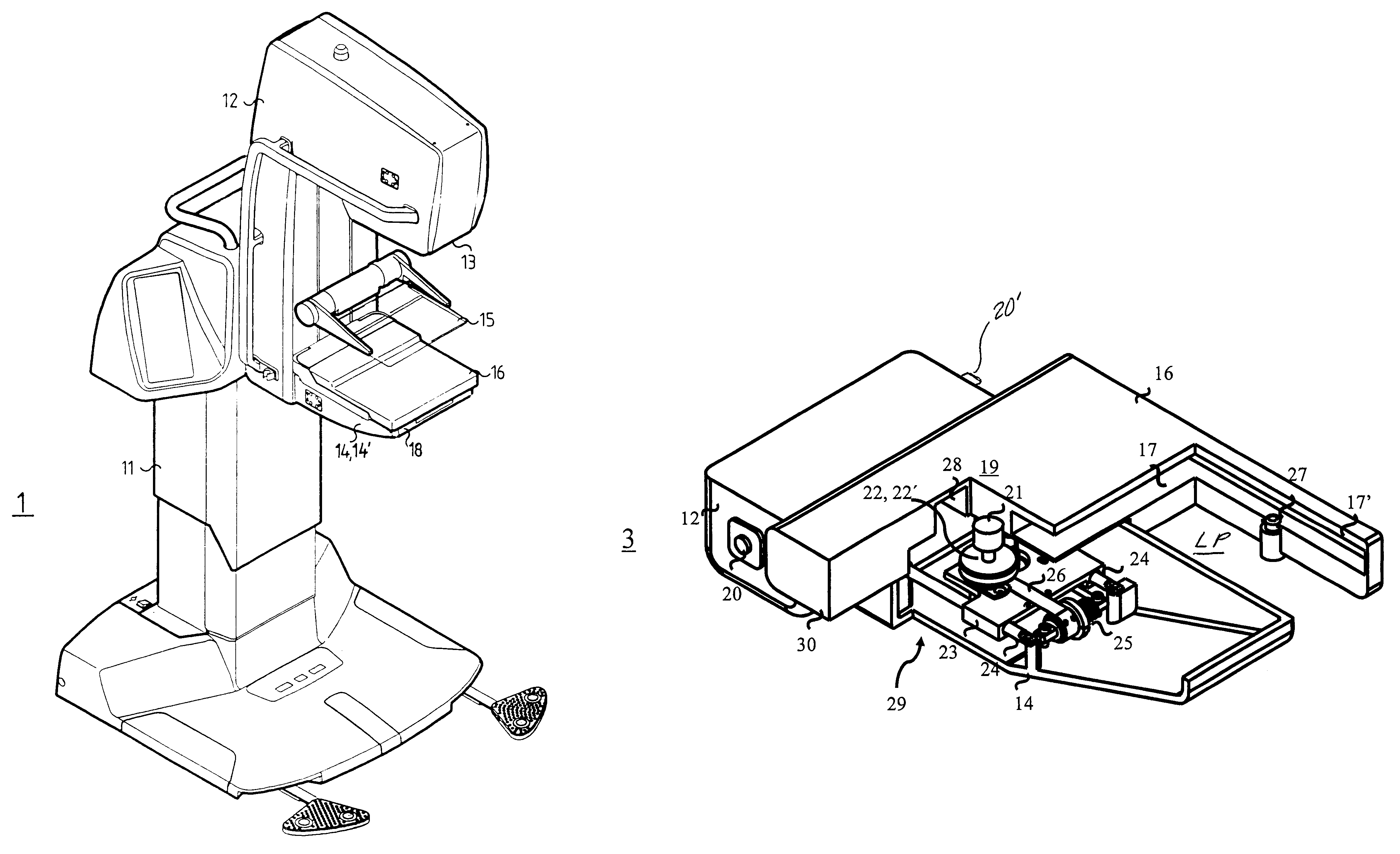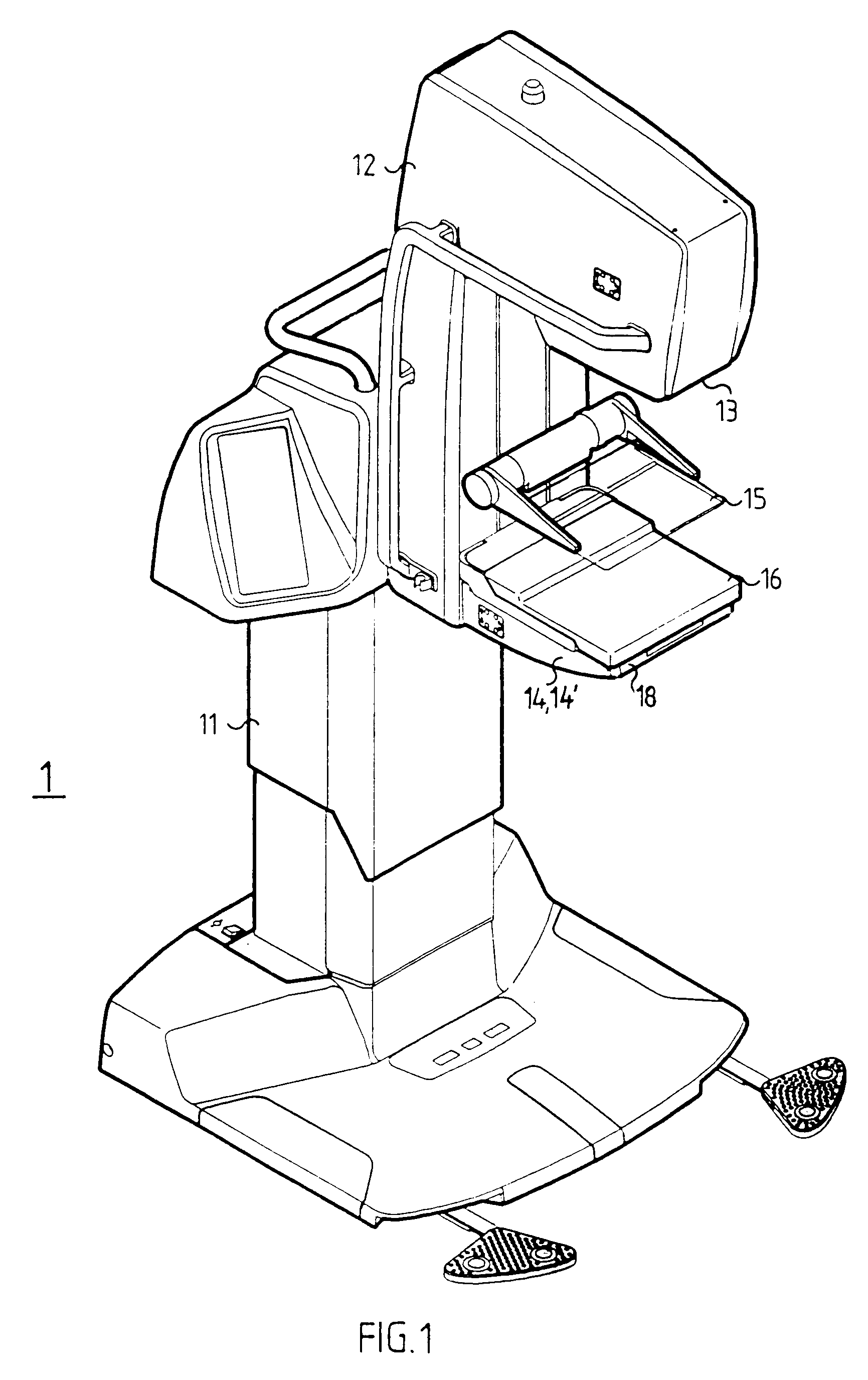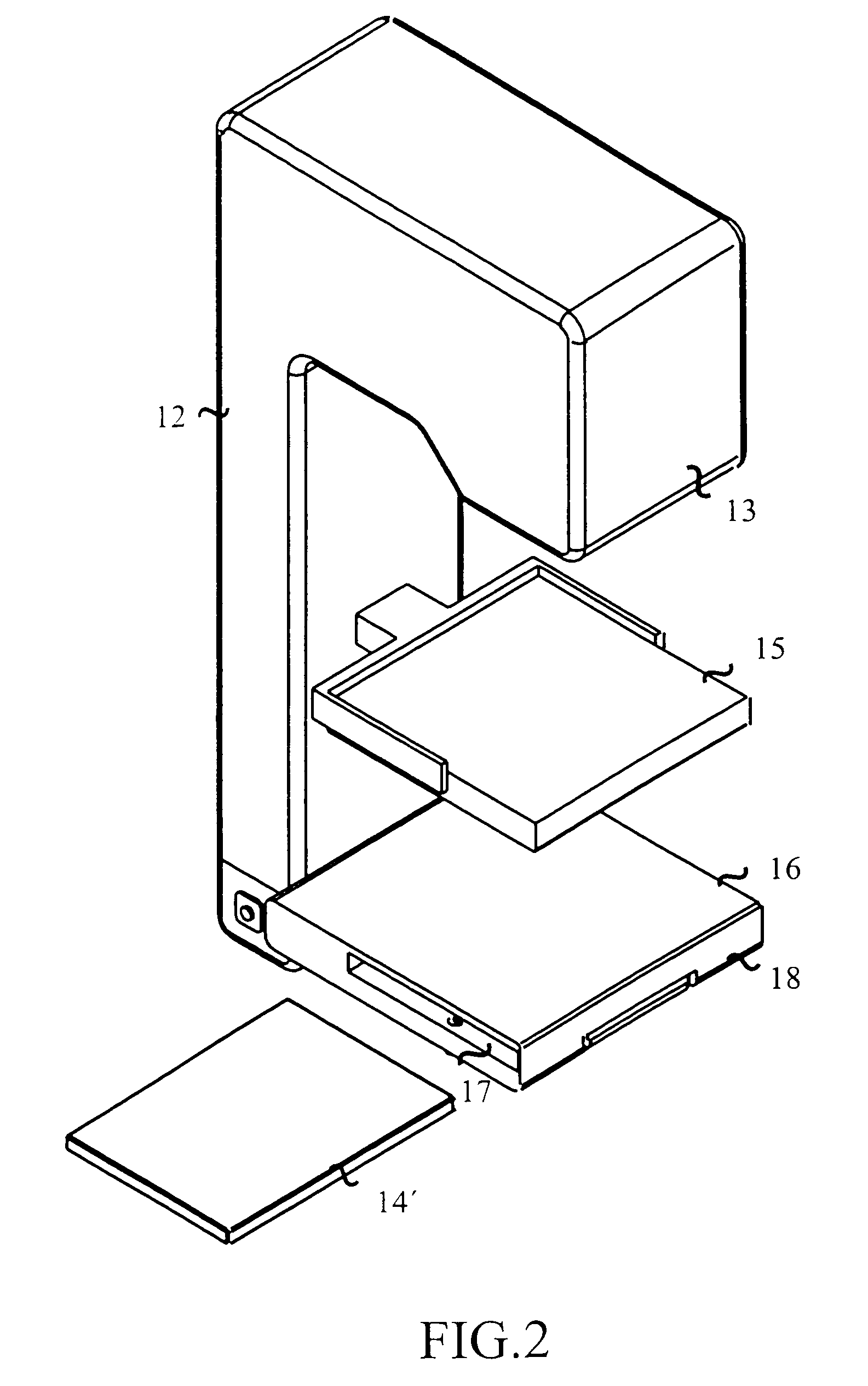Arrangement and method for means for receiving image data in mammography
a technology for receiving means and image data, applied in mammography, medical science, instruments, etc., can solve the problems of inconvenient handling of cassettes, inconvenient operation, and inability to adjust the arrangement of images, so as to improve and achieve the effect of improving the working comfort and ergonomics
- Summary
- Abstract
- Description
- Claims
- Application Information
AI Technical Summary
Benefits of technology
Problems solved by technology
Method used
Image
Examples
Embodiment Construction
[0026]The mammography x-ray apparatus 1 presented in FIG. 1 consists of a frame part 11 and a C-arm 12 connected to it. Typically, placed at opposite ends of the C-arm 12 are a radiation source 13 and an image data receiving means 14′, which is located e.g. inside a so-called bottom shelf structure 14. These imaging means 13, 14′, being placed inside the casing of the apparatus, are not actually visible in FIG. 1. In addition, placed in the area between these imaging means 13, 14′, typically near the image data receiving means 14′, are means 15, 16 for positioning the object to be imaged in the imaging area. Typically, the C-arm 12 can be both moved vertically and horizontally in relation to the means 15, 16 for positioning the object to be imaged and rotated in relation to the frame part 11. The positioning means 15, 16 typically consist of an upper compression plate 15 and a lower compression plate 16, and the lower compression plate 16 may also be arranged to function as a so-cal...
PUM
 Login to View More
Login to View More Abstract
Description
Claims
Application Information
 Login to View More
Login to View More - R&D
- Intellectual Property
- Life Sciences
- Materials
- Tech Scout
- Unparalleled Data Quality
- Higher Quality Content
- 60% Fewer Hallucinations
Browse by: Latest US Patents, China's latest patents, Technical Efficacy Thesaurus, Application Domain, Technology Topic, Popular Technical Reports.
© 2025 PatSnap. All rights reserved.Legal|Privacy policy|Modern Slavery Act Transparency Statement|Sitemap|About US| Contact US: help@patsnap.com



